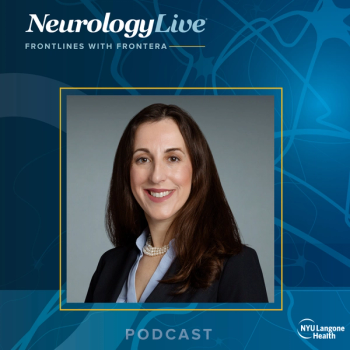
Small-Scale Study Highlights Positive Impacts of Once-Nightly Sodium Oxybate on Sleep-Related Eating Disorder
Key Takeaways
- Switching to once-nightly sodium oxybate resolved SRED in narcolepsy patients, with 63% experiencing BMI reduction.
- Once-nightly sodium oxybate, approved in 2023, is the first once-nightly treatment for narcolepsy, showing efficacy in the REST-ON trial.
Switching to once-nightly sodium oxybate significantly improves sleep-related eating disorder in narcolepsy patients, enhancing overall treatment outcomes.
Using retrospective chart reviews, findings from a small-scale, single-site analysis revealed that switching treatment to once-nightly sodium oxybate (Lumryz; Avadel Pharmaceuticals) was associated with improvements in sleep-related eating disorder (SRED) among patients with narcolepsy.1
SRED is a type of parasomnia characterized by episodes of involuntary eating and drinking that occur during partial arousals from sleep, often without full awareness or memory of the event. In the context of narcolepsy, SRED is more common and may be part of the broader disruption of sleep-wake regulation seen in the disorder.
Presented at the
"One of the biggest problems that we deal with is sleep-related eating disorder, and it’s very common," lead author Lewis Kass, MD, a pediatric pulmonologist at Valley Health System, told NeurologyLive®. "When patients would take that first dose and not fall asleep within the first 30 or 40 minutes, their hunger would kick in and many patients would go raid the refrigerator. It has become a big problem for many families in a variety of ways."
In the trial, patient demographics, medical history, oxybate treatment duration, dosage, and weight-related measures were recorded before and after patients switched treatment. Coming into the study, the mean age of the cohort was 21 (SD, 4.1) years, 6 (75%) were female, and 6 (75%) and 2 (25%) had narcolepsy type 1 and 2, respectively. Before switching to ON-SXB, median TN-OXB dose and mean treatment duration were 8.8 (range, 4.8-10.5) g and 40.6 (SD, 21.1) months, respectively, with 3 individuals (37.5%) taking asymmetric doses. After switching to ON-SXB, median dosage was 9 g (range, 6-9).
READ MORE:
"Before the once-nightly medication came around, this was something we dealt with a lot," Kass added. "Besides increasing the strength of dose 1, which is one of the many ways I was dealing with this, sometimes you had to compromise with the medication. Of course, we say you’re supposed to take the oxybates on an empty stomach, but sometimes you have to take the edge off the hunger. One way I would help patients was to make sure they take a light snack before dose number 1, something that was low fat, low carb, like an apple or crackers."
Once-nightly sodium oxybate was approved in 2023 as the first and only once-nightly oxybate treatment for patients with narcolepsy. The therapy, which comes with a boxed warning as a central nervous sytem depressant, was approved based on findings from the phase 3 REST-ON trial (NCT02720744), a 222-patient study of those with narcolepsy type 1 or 2, aged 16 years or older. All told, the study met all 3 of its primary end points of change from baseline in mean sleep latency on the Maintenance of Wakefulness test, Clinical Global Impression Improvement, and weekly cataplexy attacks within the 6-, 7.5-, and 9-g groups.2,3
To date, there have been no large, randomized controlled trials specifically evaluating sleep medications to treat SRED in patients with narcolepsy; however, several smaller studies and case reports have provided insights. Some reports have shown that medications like topiramate and SSRIs can reduce SRED symptoms–primarily in non-narcolepsy contexts–but these agents may be of interest in narcolepsy-related SRED. Notably the World Health Organization pharmacovigiliance database includes sodium oxybate among drugs associated with SRED, underscoring the importance of vigilance when prescribing sleep-related medications.
REFERENCES
1. Kass L. AMELIORATION OF SLEEP-RELATED EATING DISORDER AFTER SWITCHING FROM TWICE- TO ONCE-NIGHTLY OXYBATE. Presented at: 2025 SLEEP Annual Meeting; June 8-11; Seattle, Washington. ABSTRACT 0842.
2. Avadel Pharmaceuticals announces final FDA approval of Lumryz (sodium oxybate) for extended-release oral suspension as the first and only once-at-bedtime oxybate for cataplexy or excessive daytime sleepiness in adults with narcolepsy. News release. Avadel Pharmaceuticals. May 1, 2023. Accessed June 9, 2025. https://www.globenewswire.com/news-release/2023/05/01/2658536/0/en/Avadel-Pharmaceuticals-Announces-Final-FDA-Approval-of-LUMRYZ-sodium-oxybate-for-Extended-Release-Oral-Suspension-as-the-First-and-Only-Once-at-Bedtime-Oxybate-for-Cataplexy-or-Exc.html
3. Kushida CA, Shapiro CM, Roth T, et al. Once-nightly sodium oxybate (FT218) demonstrated improvements of symptoms in a phase 3 randomized clinical trial in patients with narcolepsy. SLEEP. 2021; zsab200. doi:10.1093/sleep/zsab200
Newsletter
Keep your finger on the pulse of neurology—subscribe to NeurologyLive for expert interviews, new data, and breakthrough treatment updates.




















